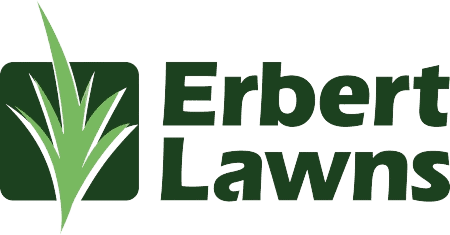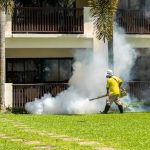
A healthy lawn is a source of pride for many homeowners, providing an inviting outdoor space for relaxation, recreation, and aesthetic appeal. However, maintaining that lush, green landscape often requires more than just regular mowing and watering. One of the primary threats to a well-kept lawn is pest infestation. At Erbert Lawns, we understand that effective pest management is key to maintaining the lush, green space you deserve. Understanding the common pests that plague lawns, recognizing the signs of infestation, and exploring treatment options are essential steps in effective pest management.
Key Takeaways
- Identify Common Pests: Recognize the culprits causing damage to your lawn.
- Know the Signs: Learn to spot early signs of infestation to act swiftly.
- Explore Treatment Options: Discover safe and effective methods to manage pests.
- Prevent Recurrence: Implement strategies to keep pests at bay year-round.
Common Lawn Pests and Their Impact
Lawn pests come in various forms, each with distinct behaviors and damage patterns. Here are some of the most common culprits:
-
Grubs (Beetle Larvae)
Grubs, the larvae of beetles, feed on grass roots, causing large brown patches. They feed on grass roots, causing significant damage to the lawn by weakening and killing the grass. When grub populations are large, the lawn may begin to feel spongy, and large patches of grass may turn brown and die. Identifying & treating Grubs in lawn is crucial to maintaining a healthy and vibrant landscape. Early detection and prompt action can prevent extensive damage.
-
Chinch Bugs
Chinch bugs are small, black insects with white markings on their wings. These pests suck the sap from grass blades, leading to yellowing and dying patches. In large numbers, chinch bugs can cause substantial damage to lawns, leading to brown, patchy areas. The damage is often more noticeable during hot, dry weather.
-
Armyworms
Armyworms are the larvae of certain moth species, and they can devastate a lawn in a short period. They feed on grass blades and leaves, creating irregular patches of destruction. Armyworms tend to move in groups, and they often appear suddenly, quickly defoliating large sections of grass.
-
Sod Webworms
Sod webworms are the larvae of small moths. They feed on the leaves and stems of grass, often creating small holes and thinning patches. The damage is usually concentrated in irregular areas, and affected lawns may have a “shabby” appearance with dead or dying patches.
-
Turf Mites
Turf mites are tiny pests that feed on the cells of grass blades, leaving behind yellow or brown spots. In severe infestations, the grass may die in patches. Turf mites often thrive in hot, dry conditions and can be difficult to detect because of their size.
-
Ants
While ants don’t typically eat grass, they can cause damage to lawns by building extensive underground nests. Their tunneling can disrupt the root system of your grass, causing the lawn to weaken. Ants may also carry aphids to your lawn, which can lead to further pest issues.
Signs of a Pest Infestation
Detecting a pest infestation early is crucial for preventing extensive damage to your lawn. Here are several common signs to watch for:
-
Discolored Grass
Yellowing or browning grass patches are often the first visible signs of pest damage. The color change may begin in small spots and gradually spread as the pests continue to feed on the grass roots or blades.
-
Wilting or Dying Grass
If the lawn appears dry and wilting, even after proper watering, it may be an indicator that pests are attacking the roots or leaves. Grass that has been infested with grubs or chinch bugs, for example, often becomes weak and lifeless due to a lack of nutrients.
-
Spongy or Lifting Turf
In the case of grub infestations, you may notice that the turf feels spongy when you walk on it. The grass can easily be lifted from the soil due to the damage to the root systems. This is a telltale sign of grub activity beneath the surface.
-
Visible Pests or Larvae
If you spot pests on your lawn, such as chinch bugs, armyworms, or beetle larvae, this is a clear sign that an infestation is occurring. Pests like grubs and sod webworms may also leave behind visible larvae or droppings on the surface.
-
Unusual Amount of Bird Activity
Sometimes, an increase in bird activity can be a sign of a pest infestation. Birds, particularly starlings, may flock to your lawn in search of insects like grubs and beetles, which they feed on. If you notice unusual bird activity, it may be worth inspecting the lawn for pests.
Effective Pest Management Solutions
Once you identify that your lawn has a pest infestation, it’s important to take action promptly to prevent further damage. There are several effective treatment methods or pest remedies, ranging from natural remedies to chemical controls.
-
Cultural Practices
One of the first steps in managing lawn pests is to maintain a healthy lawn. A healthy, well-established lawn is less susceptible to pest damage. Regular lawn care practices, such as proper mowing, watering, and fertilization, can help your grass resist pests and recover more quickly from infestations.
- Mowing: Keeping your grass at the right height can help deter certain pests, such as chinch bugs, that prefer shorter grasses.
- Watering: Hone watering technique by watering your lawn deeply but infrequently to encourage deep root growth. Proper smart watering techniques help maintain a healthy garden or lawn and discourage pests like grubs, which thrive in shallow, moist soil. Shallow watering encourages pests to feed on the grass roots, so it’s crucial to get it right.
- Aeration: Aerating the soil can help improve root health, making it harder for pests to damage the grass.
-
Biological Control
Biological control involves using natural predators to manage pests. For example, nematodes (microscopic worms) can be introduced to the soil to attack grubs. Additionally, introducing beneficial insects such as ladybugs or parasitic wasps can help control aphids and other harmful insects.
-
Chemical Control
In cases of severe infestation, chemical treatments may be necessary. Perimeter pest control can be incorporated alongside targeted chemical treatments to ensure pests are stopped before they invade your property. There are several pesticides available for different types of lawn pests, including grub control products, insecticides for chinch bugs, and fungicides for turf mites. Always follow label instructions when applying pesticides to minimize harm to beneficial organisms and the environment.
-
Natural Remedies
Some homeowners prefer to use natural pest control methods, such as homemade insecticidal soaps or neem oil. These treatments can be effective for smaller infestations but may require more frequent applications. Always test natural remedies on a small portion of your lawn first to ensure they don’t cause damage.
Preventative Measures for Long-Term Protection
- Aerate Your Lawn: Improve soil health and discourage pests by aerating regularly.
- Maintain Proper Watering Practices: Avoid overwatering, which can create a hospitable environment for pests.
- Fertilize Strategically: Strengthen your lawn’s resilience with appropriate nutrients.
- Mow Correctly: Keep grass at the recommended height to reduce pest hiding spots.
- Seal Entry Points: For lawns adjacent to homes, seal gaps to prevent pests from migrating indoors.
Conclusion
Pests can pose a significant challenge to maintaining a beautiful lawn, but with the right knowledge and proactive steps, you can protect your investment. At Erbert Lawns, we specialize in integrated pest management programs and solutions designed to address pests effectively while promoting environmental balance. Contact us today to learn how we can help your lawn thrive.
FAQ’s
What are the most common lawn pests?
Common lawn pests include grubs, chinch bugs, sod webworms, armyworms, and mole crickets. Each poses unique threats to your grass.
How do I know if my lawn has pests?
Signs include discolored patches, visible insects, uneven growth, or increased bird activity pecking at your lawn.
Can I prevent lawn pests without chemicals?
Yes, strategies like proper mowing, watering, and introducing beneficial insects can naturally deter pests.
How often should I inspect my lawn for pests?
Inspect your lawn at least once a month and after significant weather changes to catch early signs of infestation.
Why should I hire professional pest management services?
Experts offer tailored solutions, advanced tools, and in-depth knowledge to manage pests effectively and prevent future issues.











